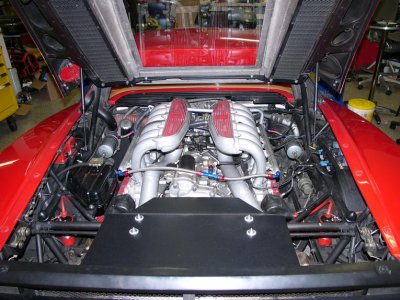Of course the majority of the load is on the lower side of the cylinder with the second largest percentage on the upper, almost no load on the sides as the pin is not spherical, and the piston can only move rotationally, linear to the stroke. The stock walls have been strong enough to sustain 725 HP continuous, and are more then strong enough to contain the pressure of 1000+ horsepower, if flex was not present. It’s the flex of the wall that will ultimately cause failure around 825 HP. By eliminating the flex or amount of flex, I will likely be able to sustain my target of 800+.
A cast sleeve that doesn’t extend to the deck is eliminating one of the best features of the Honda engine design, without adding any strength.
Most of the builders are never going to see 700+ HP, so problems likely wont arise with either the stock or the un-supported sleeves.
The unsupported sleeve is still held in place with the stock lower aluminum… it’s not the sleeves lack of ability to contain the pressure, its flex! I would say that a cast-sleeved block with support that goes to the deck would likely be the strongest. Good for engines above 1000 HP with limited cooling needs, like drag racing.
Back to the Honda Design- Your stock block has aluminum sleeves that are plated with something similar to “Nickacile” (Yamaha’s version). The reason for this advancement is superior heat dissipation for leaner running/racing engines, without sticking pistons. This technology is usually only found in high performance two-strokes. And should be retained if at all possible. If you need to bore, then re-plate the walls by a reputable plater with cylinder experience.
One other note- before you have problems with your stock sleeves, you will first have problems with the stock main caps, then the stock rod bolts.
Also keep in mind that a catastrophic failure usually will destroy more then one area of the engine;
If a main cap gets stretched causing oiling problems and the crank fails, a rod will fail and bust out a cylinder wall with a piston in multiple pieces. The point is that catastrophic failures lead to someone’s opinion of what the cause was. Was it the piston, or the cylinder wall, or the rod, or the rod bolts, or the crank, or the mains, or the main bolts, or the bearing clearance or the oil pump, or the tuner running too lean? The only way to tell is to disassemble and measure parts, including reassembling the remaining parts and measuring bolt stretch and bearing clearance and out of round. Most will only visually inspect and form an opinion, and a mechanic looking at a rod sticking out of the side of a block is purely guessing.
I hope that didn’t sound too bitter, and more like a logical evolution to the NSX road race engine?




